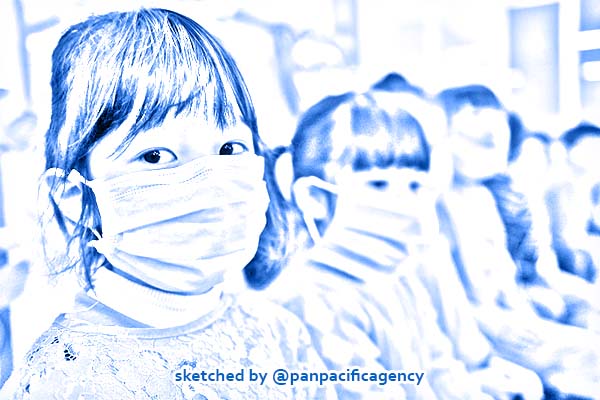Vietnam govt spends nearly $770M to support efforts against Covid-19

Vietnam's local authorities closing schools to protect schoolchildren from coronavirus. Photo: The Hanoi Times. Sketched by the Pan Pacific Agency.
HANOI, Aug 10, 2020, Hanoi Times. The Vietnamese government has spent VND17.77 trillion (US$765 million) on efforts to mitigate Covid-19 damage and on financial support for people affected by the pandemic, Hanoi Times reported.
Nearly US$770 million has been allocated from the state budget to aid the Covid-19 fight.
The Covid-19 pandemic has exerted severe impacts on Vietnam’s economy during the first seven months this year, while disruption of economic activities during the social distancing period in April brought many enterprises to the brink of bankruptcy.
This factor, along with the slow economic recovery from the pandemic, the recent Covid-19 resurgence in some localities and the government’s ongoing supporting programs, has shrunk state budget revenue, stated the Ministry of Finance (MoF).
During the January – July period, state budget collection was estimated at VND779.8 trillion (US$33.64 billion), equivalent to 51.6% of the year’s estimate and down 13.1% year-on-year. Upon breaking down, domestic revenue was down 10.6% year-on-year to reach 51.4% of the estimate; revenue from crude oil suffered a sharp decline of 32.6% and met 65.4% of the estimate; and that from export – import activities decreased by 20.5% and met 51.2% of the estimate.
Additionally, revenue from tax income of state-owned enterprises witnessed a decrease of 21% and met 44.8% of the estimate; that of foreign-invested sectors down 12.6% to 48.5% of the estimate; private sector down 20.5%; fees and charges down 17%.
As of July 20, the government delayed the payment worth a combined amount of VND47.6 trillion (US$2.04 billion) of land rental fees and taxes for enterprises, organizations and household businesses.
Meanwhile, state budget expenditures in the seven-month period totaled VND855.5 trillion (US$36.83 billion), equivalent to 49% of the year’s plan and up 10.1% year-on-year. Of the total, regular spending reached 55.8% of the plan, capital expenditure 40.8%, and interest payment 57.8%.